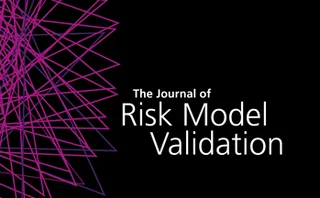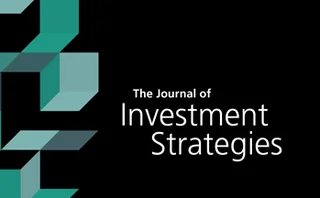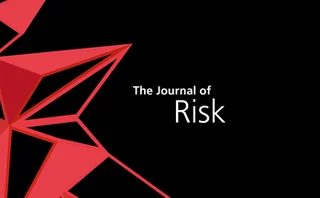Technical paper/Volatility
Benchmark reform goes non-linear
Terminating Libor will bring great challenges to the pricing of non-linear rate products
A new arbitrage-free parametric volatility surface
A new arbitrage-free volatility surface with closed-form valuation and local volatility is introduced
International announcements and West Texas Intermediate crude oil futures: a case study on the 2008 global financial crisis
The authors examine the impact of international monetary policy and professionals' announcements on West Texas Intermediate crude oil futures.
Volatility spillover along the supply chains: a network analysis on economic links
The analysis in this paper reveals that additional fundamental risk gets transferred along supply chains, and that suppliers are exposed to additional fundamental risk that is not captured by their market beta. Suppliers are therefore exposed to…
Range-based volatility forecasting: a multiplicative component conditional autoregressive range model
This paper proposes a multiplicative component CARR (MCCARR) model to capture the "long-memory" effect in volatility.
Old-fashioned parametric models are still the best: a comparison of value-at-risk approaches in several volatility states
The authors present backtesting results for 1% and 2.5% VaR of six indexes from emerging and developed countries using several of the best-known VaR models, including generalized autoregressive conditional heteroscedasticity (GARCH), extreme value theory…
The quadratic rough Heston model and the joint S&P 500/Vix smile calibration problem
A combination of rough volatility and price-feedback effect allows for SPX-Vix joint calibration
The joint S&P 500/Vix smile calibration puzzle solved
SPX and Vix derivatives are modelled jointly in an arbitrage-free setting
Volatility forecasting: the role of internet search activity and implied volatility
In this study, the authors search for a benchmark model with available market-based predictors to evaluate the net contribution of internet search activity data in forecasting volatility. The paper conducts in-sample analysis and out-of-sample…
The swap market Bergomi model
The combination of two popular volatility models sharpens the hedging of exotic rate derivatives
Stay ahead of the fixing lag
The price of fund-linked derivatives depends on the fixing lag of the underlying funds
A consistent investment strategy
This paper introduces a consistent performance strategy (CPS), which, if followed, leads to a portfolio having consistently positive returns over time and exhibiting a steady upward trend.
Forecasting value-at-risk
Alvin Stroyny and Tim Wilding build a dynamic risk framework for multi-asset global portfolios
Can shorting leveraged exchange-traded fund pairs be a profitable trade?
In this paper, the authors examine if investors can profit from the underperformance of leveraged exchange-traded funds (ETFs) in long holding periods.
Dynamic volatility management: from conditional volatility to realized volatility
In this paper, the authors present a multiperiod portfolio management strategy that can be used to directly manage the realized volatility over a long time horizon.
The efficiency of the Anderson–Darling test with a limited sample size: an application to backtesting counterparty credit risk internal models
This paper presents a theoretical and empirical evaluation of the Anderson–Darling test when the sample size is limited.
The 2D tree–grid method
In this paper, the authors introduce a novel, explicit, wide-stencil, two-dimensional (2D) tree–grid method for solving stochastic control problems (SCPs) with two space dimensions and one time dimension, or, equivalently, the corresponding Hamilton…
From log-optimal portfolio theory to risk measures: logarithmic expected shortfall
In this paper, the authors propose a modification of expected shortfall that does not treat all losses equally. We do this in order to represent the worries surrounding big drops that are typical of multiperiod investors.
Tail-risk mitigation with managed volatility strategies
This paper examines strategy performance from an investment practitioner perspective. Using long-term data from the Standard & Poor’s 500, the authors show that these strategies offer an improvement in risk-adjusted return compared with a buy-and-hold…
Roughening Heston
El Euch, Rosenbaum, Gatheral combine a rough volatility model with the classical Heston model
Range-based volatility forecasting: an extended conditional autoregressive range model
This paper proposes an extended conditional autoregressive range (EXCARR) model to describe the range-based volatility dynamics of financial assets.
ε-monotone Fourier methods for optimal stochastic control in finance
In this paper, the authors give a preprocessing step for Fourier methods that involves projecting the Green’s function onto the set of linear basis functions.
Second-order risk of alternative risk parity strategies
In this paper, the authors provide theoretical and empirical evidence of the contribution of second-order risk to realized volatility for alternative risk parity strategies.
An adaptive Filon quadrature for stochastic volatility models
In this paper, the author describes a simple adaptive Filon method that performs better and more accurately than various popular alternatives for pricing options under the Heston model.














